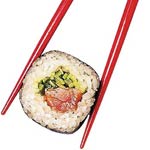Mr olive turns japanese
After a bumpy ride, A.D. Singh is on the verge of expanding his restaurant portfolio. But he’s not taking the easy route.


A.D. Singh
And the way he frames it, you can hardly fail in this business anyway. “The restaurant scene in India is wide open,” he exclaims. “It’s not like London or New York, which are full, and extremely competitive. This is still a young market. You can do pretty much anything here, and if you do it well, it will succeed.” So, why the trepidation about Launch #16? “This isn’t Olive we’re talking about,” he says. “I’m launching a contemporary Japanese restaurant called ai. It’s the biggest gamble of my career.” We’re having lunch at Olive Beach in Delhi, one of the more laid-back of Olive’s incarnations (currently, there are two more in Mumbai, and one in Bangalore). It’s a balmy setting, all white and cyan and beige, tucked discreetly away in the leafy hush of the Hotel Diplomat in Chanakyapuri. ai, on the other hand, is a world apart—on the 2nd floor of the MGF Mall in Saket, South Delhi; it is split into three distinct sections.
A smoky bar/lounge complete with jazz stage, a bright and airy restaurant, and then a gorgeous summer terrace outside. It’s the last thing you’d expect to find in a mall. And that’s to say nothing of the food. “Indians are squeamish about sashimi,” he says. “A place like Olive is an easy sell—Italian food, good service, a nice vibe. It’s a formula. But Japanese is another ball game.” Japanese food has had a fitful lineage in India to date. The first restaurants popped up where there were pockets of Japanese expats—in Bangalore and Chennai—but they were basic noodle/tempura joints, nothing special. When the five-stars started to dabble in this space, they, too, played it safe.

And it’s true to an extent—it is a benchmark, it shows where we are as a culture.” The success of Wasabi added immensely to the aspirational cachet attached to Japanese food. “Aspiration is what’s driving markets in India,” says Singh. “Look at the wine and cigar boom. And Japanese is notionally the trendiest cuisine in the world—all the top stars in the world love sushi. It’s healthy, it’s chic.” Post-Wasabi, Japanese cuisine has started popping up all over the place—a second Wasabi in Delhi, the cross-fusion Tetsuma in Mumbai, Dahlia in Bangalore. And increasingly, the popularity of sashimi is beginning to establish itself. Maybe sashimi doesn’t need Indianising, after all. “You mean the spice thing?” says Singh. “We recognise that. See, we’re not a classic Japanese restaurant, with standardised menus. We’re contemporary Japanese, which is more avant garde. So, that leaves room to adapt a little. When I was checking out our chef (Britisher Grant Brundsen from the London restaurant Zuma), he served me tuna sashimi with a spicy sauce.

Anyway, they sealed the whole space.” It was a severe setback. Since Singh kept his staff on, he was haemorraghing cash. But equally, it forced him to seek out new spaces and get back on his feet. And in the process, he found three spaces that he liked in Delhi, so he took them all. Now, he’s on the verge of a major expansion. And typically, he’s not taking the soft option. With a hit brand like Olive, it would be easy to diversify and take it mass market. But he’s not just in it for the money. “I’m in this business to make restaurants where I’d like to go,” he says. “I make enough money.” So, all three restaurants are entirely different. His first was Olive Beach, his second is ai, in the MGF Mall, and the third will be what Singh describes as a “restaurant bar/lounge concept, in partnership with Arjun Rampal, the actor. Multicuisine, DJs, lovely garden, a really hip international space.” There’s something inevitable about Singh partnering with a Bollywood star.

Olive, Mumbai

ai, Delhi
One of the treats of having a hot restaurant is that you meet your heroes. “Some of these guys were Gods to me growing up,” he says. “Like Clive Lloyd. Or Graeme Smith or Wasim Akram. I didn’t just say hi, I sat there for hours with them.” Singh is a huge sports fan. He takes golfing holidays (current handicap, 10). And if he’s not playing a few holes, he’s down the gym or playing volleyball with his friends. It shows. Between the sports and his hectic schedule, he’s staying in pretty good shape for a restaurateur. Now with his multiple ventures in Delhi, the once loyal Mumbaikar has bought a home here, and divides his time pretty evenly. There’s a lot of flying in Singh’s life. A lot of reading on planes. He’s reading William Dalrymple’s City of Djinns now. As the desserts come out, Singh tries to downplay quite how fabulous his life sounds. There’s a flip-side to running hot new restaurants. Sometimes, a place can have too much of a buzz. Like that time four years ago, when a nondescript lady walked into his former Olive restaurant in Delhi, and all hell broke loose. “She didn’t have a booking. She said she’d wait. Then a scruffy guy came in, said he was with her.

Sushi

Olive Beach, Delhi
With 16 launches in 18 years, A.D. Singh has never stopped influencing the eating out experience in India’s major cities. Here’s a potted history.
1990 Just Desserts (Mumbai) A jazz café that served only coffee and desserts. His partner? Rahul Akerkar of Indigo.
1995 Jazz by the Bay (Mumbai) A jazz joint created for Sanjay Narang’s group
1996 Copa Cabaana The birth of tapas and the Latino scene in Bombay
1998 Soul Kadi and Soul Fry (Mumbai) Coastal cuisine in an international setting
1999 The Bowling Company Two restaurants and a leisure business, transformed central Mumbai
2000 Olive Bar & Kitchen (Bandra, Mumbai) The phenomenon begins
2001 Suzy Wong (Mumbai) The first floating bar off Marine Drive
2003 Olive Bar & Kitchen Mehrauli (Delhi) One of the most beautiful restaurants Delhi has seen
2005 Olive Beach (Bangalore) The laid-back Olive brand starts here
2006 Olive Beach (Delhi) When one Olive closes, another Olive opens
2007 Soul Fry Casa (Mumbai) A Soul Fry for southern Mumbai
July, 2008 Olive Bar & Kitchen (Mahalaxmi, Mumbai)
Sept, 2008 ai, Delhi Contemporary Japanese. At the MGF Mall in Saket
Dec, 2008 Lap (Delhi) With Arjun Rampal. At the Hotel Samrat. Bring on the glamour










